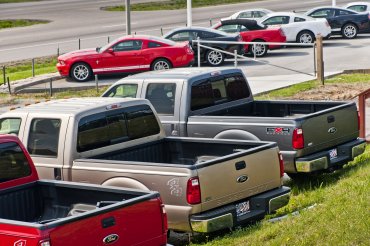
The National Automobile Dealers Association forecasts sales of 16.8 million new cars and light trucks in the United States this year, down 3 percent from 17.3 million units in 2018, which had marked the fourth straight year of sales above 17 million.
“New light vehicle sales will likely continue to decline for the rest of the year compared to 2018, but we remain confident, barring any unexpected shocks, that the auto industry is on track to sell 16.8 million new light vehicles in 2019,” Patrick Manzi, senior economist with the dealers association, said in a Q&A analysis issued earlier this month. “The downside risks to our sales forecast include the fallout from trade disputes, including potential tariffs on autos and auto parts, and the [Federal Reserve] changing course and continuing to increase interest rates.”
Manzi noted that rising interest rates on auto loans will put additional pressure on vehicle affordability for consumers this year. For dealers, rising interest rates will increase their floor plan costs, which has resulted in dealers being more selective with the inventory they stock, he added.
The NADAs economist said macroeconomic indicators that could impact auto sales are mixed for 2019. Consumer confidence is waning, but it remains high and indicates that consumers will still be willing to make large purchases, he noted. Unlike last year, the positive effects of tax cuts will be less pronounced this year. “There’s uncertainty surrounding the implementation of tariffs on imported autos and auto parts. However, job gains have been steady, and wage growth has accelerated in recent months, which are both considered net positive indicators for auto sales,” according to Manzi.
NADA also expects the gap between average monthly payments on new and used vehicles to widen in 2019. This will likely result in more consumers, especially younger and more value focused consumers, shifting to the used vehicle market, Manzi said.
NADA reported in January that consumer preferences continued to shift from cars to light trucks last year. In 2018, light trucks accounted for 69 percent of sales, while cars accounted for nearly 31 percent of sales, the association stated in a news release. In 2017, the ratio was 64.5 percent light trucks and 35.5 percent cars. About 10 years ago, the U.S. new vehicle sales mix was 48 percent light trucks and 52 percent cars.
Continued low oil and gasoline prices and improvements to crossover utility vehicles that make them nearly as fuel efficient as their sedan counterparts are the main factors for this shift away from cars, Manzi explained. “We’ve seen fuel economy increases across the board, not just on crossovers but also traditional SUVs and pickups,” he stated. “We also expect gasoline prices to remain relatively low in 2019, not as low as present, but still low enough not to cause a panic and a consumer shift back to the car market.”
NADA represents more than 16,500 light vehicle and commercial truck dealerships with both domestic and international franchises.